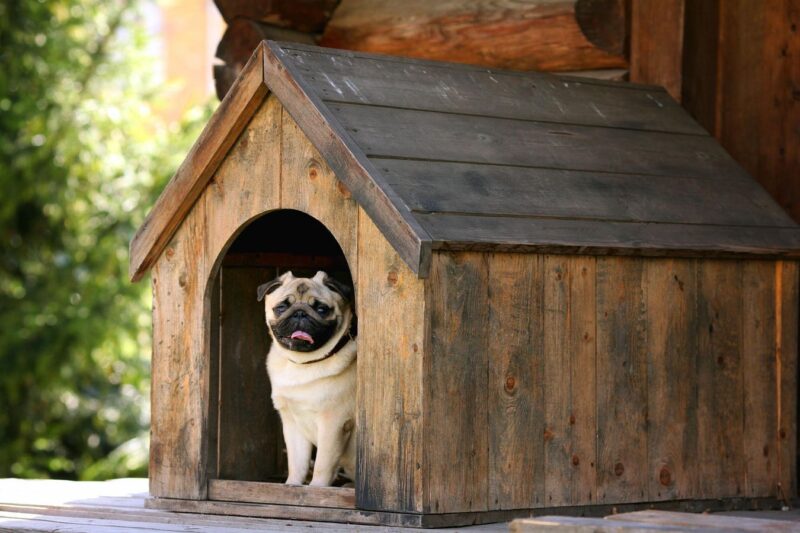Naming a pet is a venerated family tradition. In case you’re looking for inspiration, here’s a list of the most popular dog names in 2025, according to data from Trusted Housesitters.
getty
Dogs, as domesticated companions, have co-evolved with humans for thousands of years. Their loyalty, social intelligence, and emotional resonance are unmatched in the animal kingdom. So, it’s no surprise that when families get a dog, naming it becomes more than a formality — it becomes a ritual, often reflective of culture, psychology and societal trends.
According to data from Trusted Housesitters, these are the 10 most popular dog names in the United States in 2025:
Top 10 Most Common Dog Names In 2025
- Luna
- Max
- Bella
- Charlie
- Daisy
- Cooper
- Milo
- Sadie
- Buddy
- Lucy
Let’s unpack what this list reveals.
Luna Takes The Lead
Topping the list in 2025 is Luna, a name derived from Latin, meaning “moon” — and also the Spanish word for it.
“Luna” has gained traction thanks in part to pop culture influences, and it has steadily risen through the ranks since the late 2010s.
What’s Changed Over Time?
Some names — like Max, Bella and Buddy — have held firm positions on this list for over a decade. They’re simple, phonetically strong, and easily understood by dogs. That last point isn’t trivial. Research in animal communication suggests that dogs respond more readily to names with hard consonants and distinct syllables. “Max” and “Buddy” both fit the bill, which may explain their enduring popularity.
Others, like Milo and Sadie, have climbed in popularity only in the last 5–10 years.
Notably absent from the top 10 in 2025 are former favorites like Rocky, Bailey and Bear, which were once staples in naming charts. This shift could be partly attributed to generational turnover — Gen Z pet owners (now a dominant force in the pet-owning demographic) prefer more “aesthetic,” quirky or emotionally resonant names.
State-By-State Name Differences
The regional differences in name-giving throw more light on what inspires us when taking this decision. In states like Colorado and Vermont, nature-themed names like Willow and Maple often break into the top five. These areas also correlate with higher outdoor activity levels and dog breeds like retrievers and herding dogs; the ones who thrive in active, nature-rich environments.
On the opposite end on that spectrum, states with larger urban populations, such as California and New York, show a higher frequency of names like Luna, Milo, and Coco. When seen through this “environment” lens, it becomes quite clear that these names reflect the cultural diversity as well as cosmopolitan and fashionable influences that surround them.
I’d even argue that the names we choose for our dogs reflect the pressures of our cultural environments. Urban pet owners may prioritize cuteness, novelty or trendiness, whereas rural pet owners may lean toward traditional or nature-rooted names that mirror their surroundings and lifestyle.
The Role Of Pop Culture
Pop culture is one of the biggest drivers of pet-naming trends. Consider how names like Milo trended after his appearance in The Mask.
There’s also the “celebrity pet effect.” When influencers or celebrities share the names of their pets, those names often go viral. For instance, TikTok accounts featuring dogs named “Milo,” “Cooper,” and “Sadie” have millions of followers. This creates a kind of feedback loop: the name becomes desirable, leading to more pets being given that name, which then reinforces its visibility.
The Biology Of Naming
What does all of this have to do with biology? Quite a bit, actually.
Humans form bonds with animals based on biological cues — neoteny (juvenile features), vocal tone and social mimicry. Naming plays a role in reinforcing the social contract between pet and owner. Studies in behavioral biology show that dogs recognize their names as a conditioned auditory signal, often pairing it with positive reinforcement.
Moreover, naming a dog is a signal to the wider social group — in evolutionary terms, it’s a form of costly signaling. Choosing a name like “Luna” or “Coco” might indicate a person’s aesthetic leanings, values or cultural affiliations. In other words, pet names are a form of social currency.
The names we give our pets may seem whimsical or personal, as unique as our experience of life itself. We may realize, however, that these decisions, just like our lives, are rooted in a complex web of biology, culture and psychology. As our relationships with dogs evolve, so too do the symbols we use to define them.
Luna may top the charts in 2025, but that doesn’t discount the fact that we name our dogs not just to identify them, but to reflect something essential about ourselves — be it our stories, our environment or our values.
Are you an animal lover who owns a pet? Take the science-backed Pet Personality Test to know how well you know your little friend.









